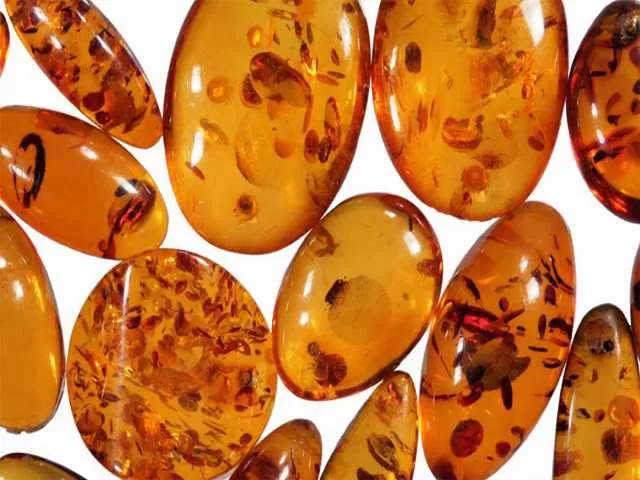Nations often boast more than one independence day, a testament to their intricate histories of unity, division, conquests, and victories. The Dominican Republic, nestled in the heart of the Caribbean, stands among those with dual celebrations – one for their 1844 liberation from Haiti and another for their 1865 independence from Spain. Amidst the historical tapestry of this vibrant nation, there’s a gem that gleams brightly, capturing the essence of the Dominican Republic: amber.
Amber: More Than a Gemstone
Unlike diamonds or rubies, amber isn’t a single element or a complex mineral. Instead, it is fossilized plant resin, a frozen moment in time that transcends centuries. This unique gem radiates a stunning golden hue, and within its depths lie captivating secrets – ancient insects, frozen in time, preserved in the resin when it was still soft and sticky.
While you might associate amber with the sugary sap coursing through a tree, it’s essential to distinguish resin from sap. Resin, a semi-solid substance secreted by many plants, particularly conifers like pine trees, serves various purposes. Some scientists consider it a waste product, but it plays a crucial role in protecting plants. Creatures, from deer to beetles, avoid or get trapped in its sticky embrace, offering a natural defense mechanism. Additionally, resin swiftly seals wounds, guarding against fungi and diseases, and helps minimize water loss from the plant’s tissues.
The Dominican Republic’s Amber Odyssey
The Dominican Republic’s amber, known as “ambar” in Spanish, takes center stage in at least two small museums and shops. The majority of amber worldwide ranges from pale yellow to orange, but the Dominican Republic surprises with a unique twist – green and even blue amber. One might wonder how amber, often associated with warm hues, can boast such vibrant colors.

According to Caribbean Green Amber, Dominican amber likely originates from an ancient species resembling the modern algarrobo tree, dating back 20 to 40 million years. The distinctive green and blue hues add a touch of magic to the Dominican amber. Dominican blue amber exhibits fluorescence, and when exposed to direct sunlight, it scatters reflected light, creating a mesmerizing blue appearance.
The Radiant Beauty of Dominican Amber
Beyond its geological and historical significance, Dominican amber holds a special place in the hearts of those enchanted by its radiant beauty. The golden glow encapsulates not only the essence of a fossilized era but also the allure of a nation with a rich cultural heritage.
Visitors to the small museums and shops dedicated to amber in the Dominican Republic embark on a journey through time. The amber, with its embedded ancient life forms, serves as a tangible connection to a bygone era. It tells tales of prehistoric landscapes, where resin flowed freely, capturing the flora and fauna of a distant past.
Unveiling the Mysteries
As you explore the mysteries of Dominican amber, you find yourself immersed in a world where nature’s secrets are frozen in time. The golden hues reflect the warmth of a nation’s spirit, while the green and blue varieties add an unexpected twist to this geological masterpiece.
In a country where independence is celebrated twice, the amber stands as a symbol of enduring beauty and resilience. Beyond the historical milestones, the Dominican Republic’s amber tells a story of life, evolution, and the timeless allure of nature’s creations. Whether you’re drawn to its historical significance or captivated by its captivating colors, Dominican amber remains a gem beyond independence, inviting the curious to unravel its mysteries and bask in its timeless radiance.

